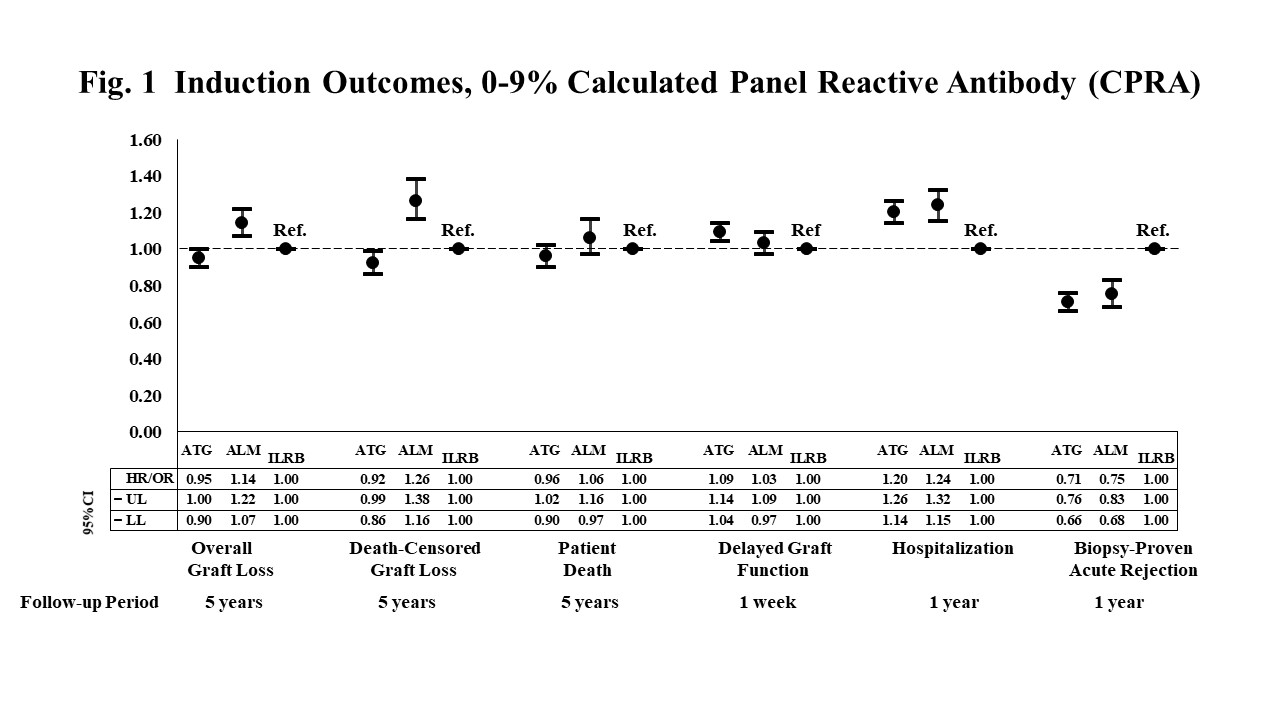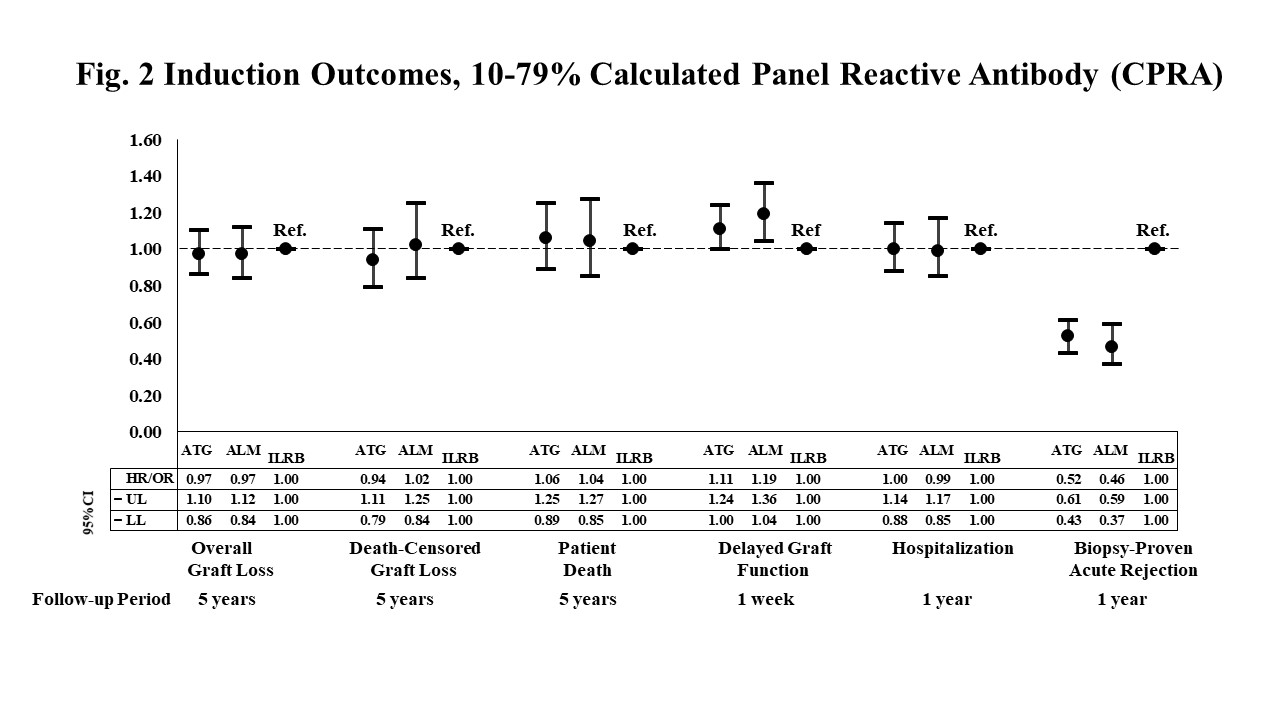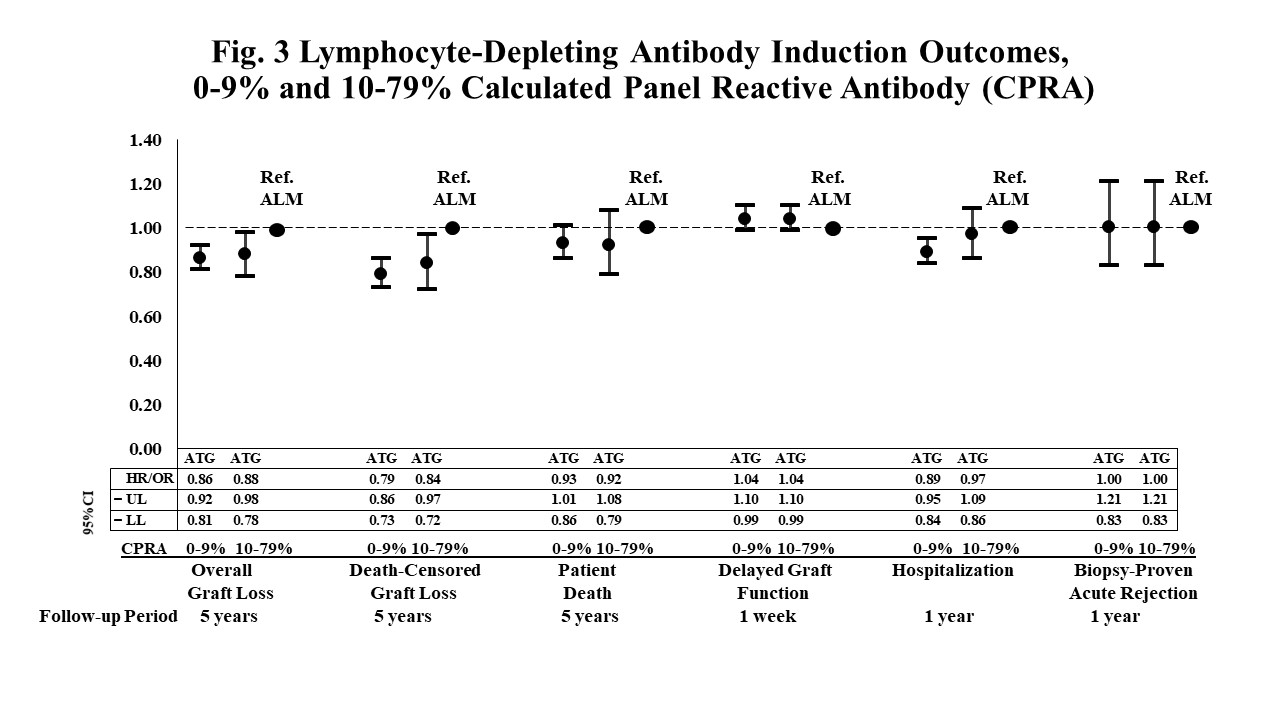Outcomes of Induction with T Lymphocyte-Depleting and IL-2 Receptor Blocking (IL-2RB) Antibodies in the Non-Broadly Sensitized Adult Deceased-Donor Kidney Transplant Recipients: Analysis in the Context of the CPRA Allocation System
1Div. of Nephrology, Univ. of Florida, Gainesville, FL, 2Univ. of Florida, Gainesville, FL, 3Univ. of Rhode Island, Kingston, RI
Meeting: 2020 American Transplant Congress
Abstract number: B-001
Keywords: Antilymphocyte antibodies, Induction therapy, Kidney transplantation, Simulect
Session Information
Session Name: Poster Session B: Kidney Immunosuppression: Induction Therapy
Session Type: Poster Session
Date: Saturday, May 30, 2020
Session Time: 3:15pm-4:00pm
 Presentation Time: 3:30pm-4:00pm
Presentation Time: 3:30pm-4:00pm
Location: Virtual
*Purpose: We studied outcomes of induction in non-broadly-sensitized adult deceased-donor kidney transplant recipients(DD-KTRs) in the context of the calculated panel reactive antibody (CPRA) allocation system.
*Methods: Using 1/2007-12/2017 SRTR data, we compared outcomes of induction with anti-thymocyte globulin (ATG), alemtuzumab (ALM), and interleukin-2 blockers (IL-2RB) in adult-DD-KTRs with CPRA below 80% (categorized into 0-9% and 10-79%) & maintained on calcineurin-inhibitor+mycophenolate+/- steroids. After propensity score matching of induction subgroups, multivariable regression analyses were conducted.
*Results: T-LYMPHOCYTE-DEPLETING (TLD) VS. IL-2RB INDUCTION: In the 0-9% CPRA group, compared with IL-2RB; 1) ATG or ALM has lower odds of 1-year biopsy-proven acute rejection (BPAR) and higher odds of hospitalization, 2) ATG has higher odds of delayed graft function (DGF), and 3) ALM has a higher and ATG has a lower risk of 5-year overall and death-censored graft loss (OAGL and DCGL, respectively), [Fig. 1]. In the 10-79% CPRA group, compared with IL-2RB, ATG or ALM has lower odds of 1-year BPAR and higher odds of DGF [Fig. 2]. TLD INDUCTION COMPARISONS: Compared with ALM; ATG has: 1) lower odds of 1-year hospitalization in the 0-9% CPRA stratum, but 2) similar odds of 1-year BPAR, 3) higher odds of DGF, and 4) lower risks of 5-year OAGL and DCGL in both CPRA strata, [Fig. 3].
*Conclusions: In non-broadly-sensitized adult-DD-KTRs, TLD provides BPAR protection with higher DGF and/or hospitalization risk(s) than IL-2RB induction. ATG may lower graft loss risk than IL-2RB and/or ALM induction(s) depending on the CPRA stratum(a).
To cite this abstract in AMA style:
Jr AHSantos, Li Y, Alquadan K, Leghrouz M, Wen X. Outcomes of Induction with T Lymphocyte-Depleting and IL-2 Receptor Blocking (IL-2RB) Antibodies in the Non-Broadly Sensitized Adult Deceased-Donor Kidney Transplant Recipients: Analysis in the Context of the CPRA Allocation System [abstract]. Am J Transplant. 2020; 20 (suppl 3). https://atcmeetingabstracts.com/abstract/outcomes-of-induction-with-t-lymphocyte-depleting-and-il-2-receptor-blocking-il-2rb-antibodies-in-the-non-broadly-sensitized-adult-deceased-donor-kidney-transplant-recipients-analysis-in-the-contex/. Accessed January 6, 2026.« Back to 2020 American Transplant Congress



